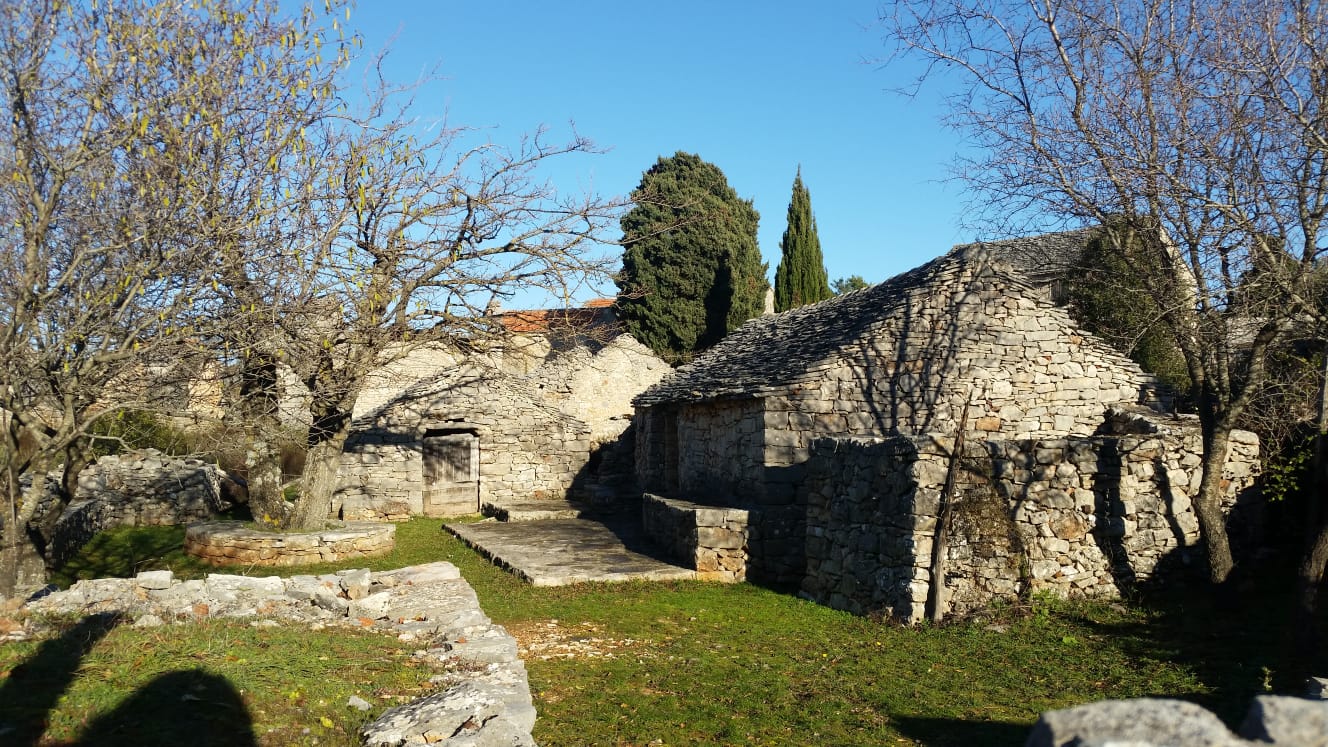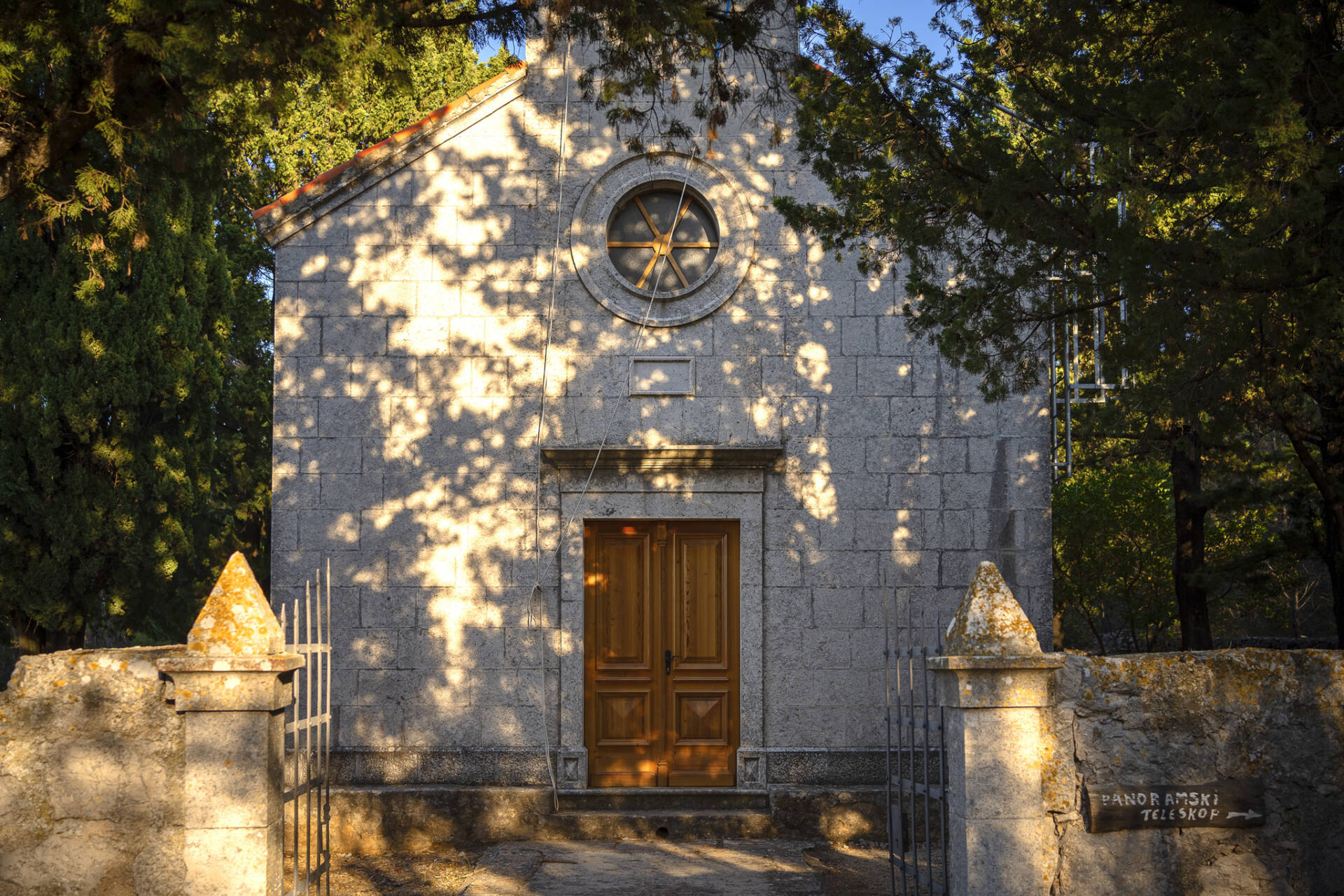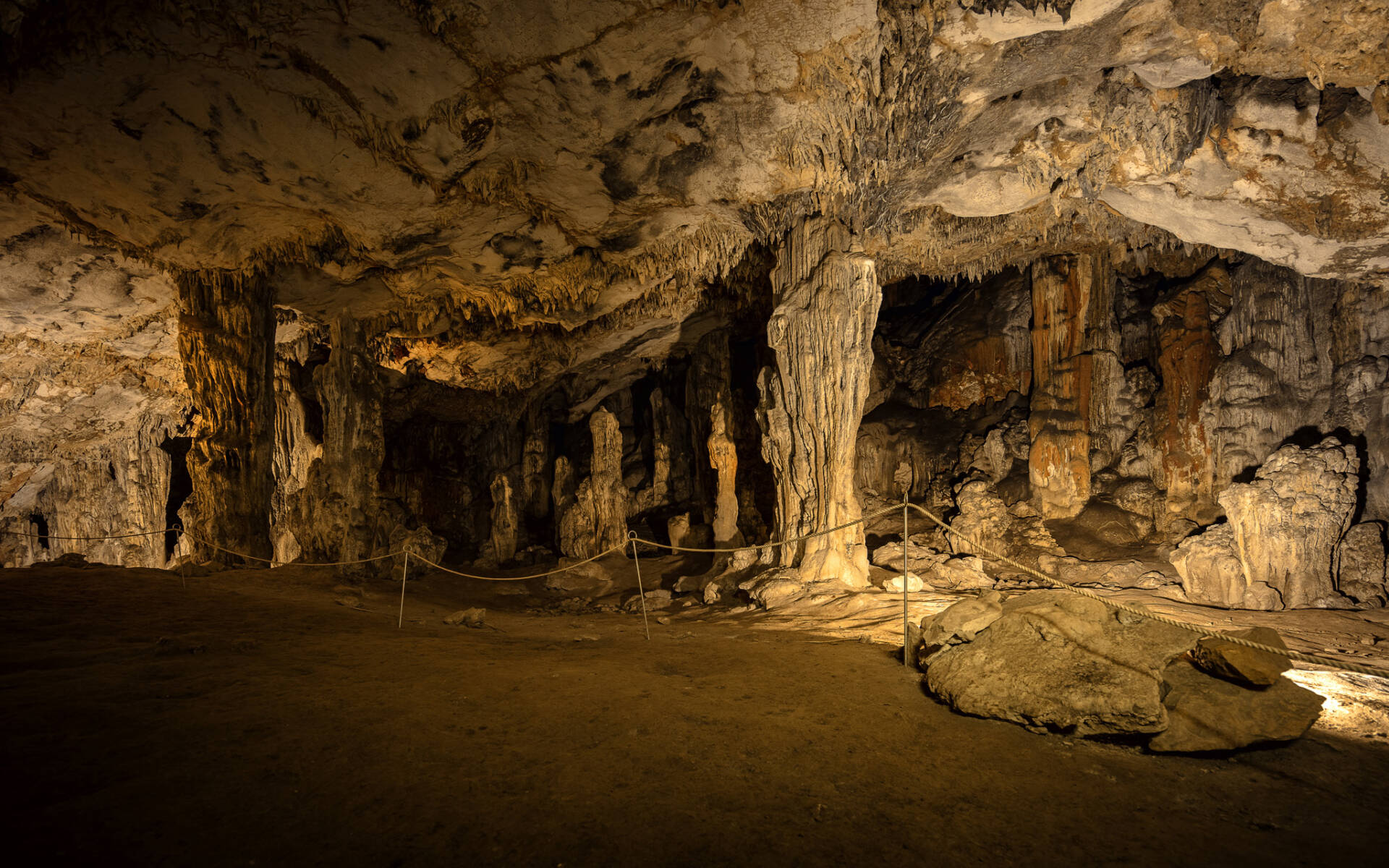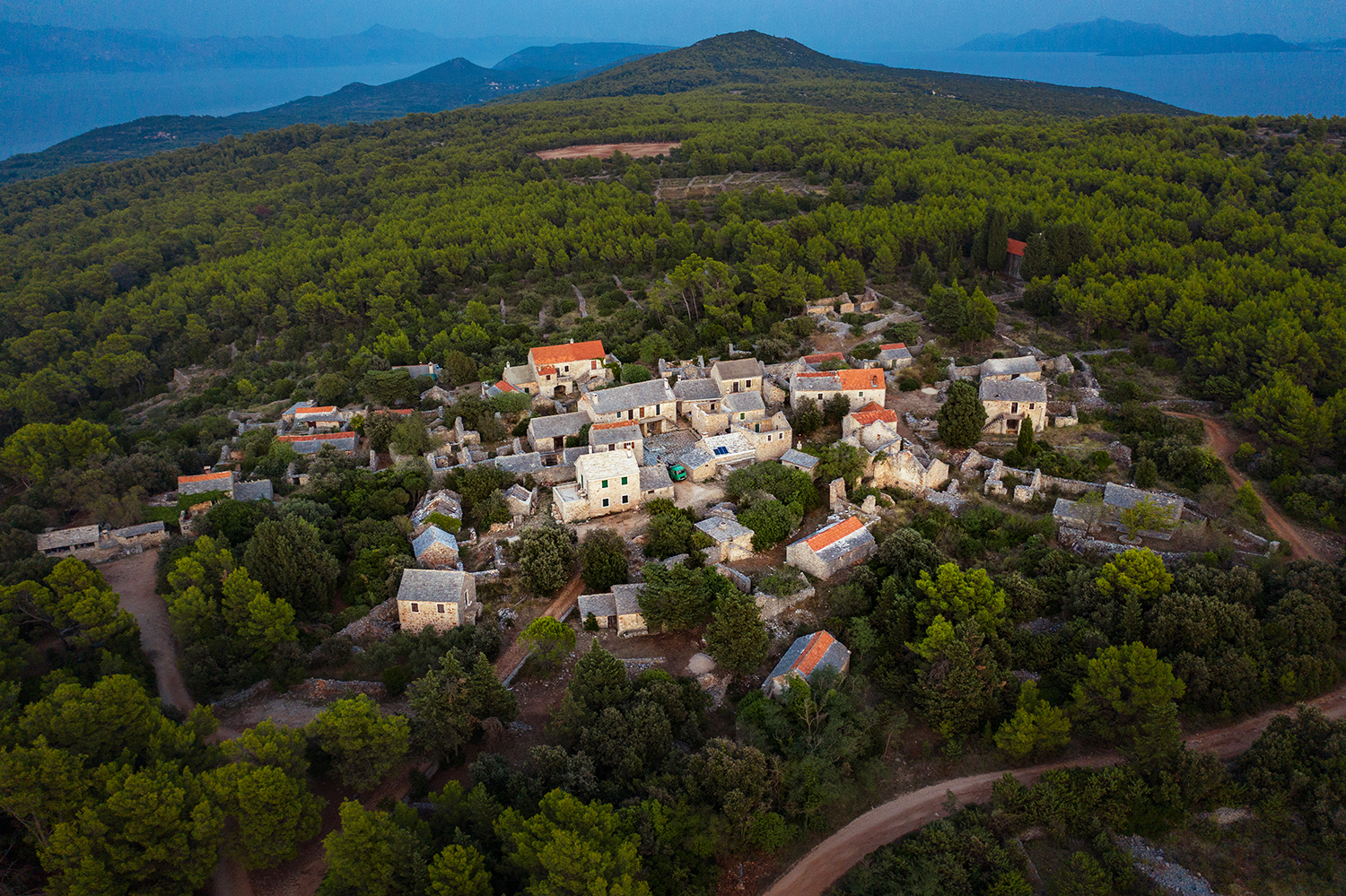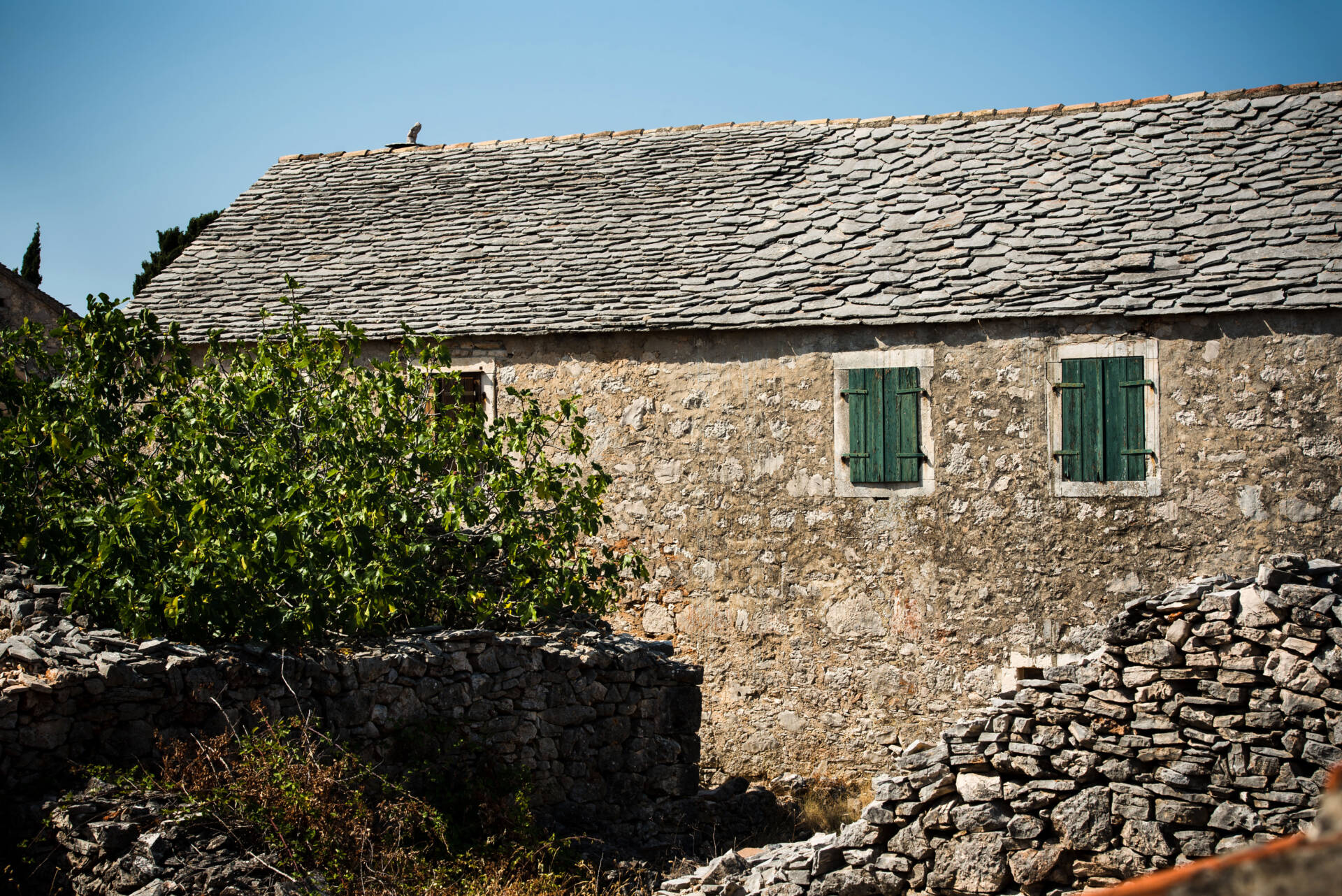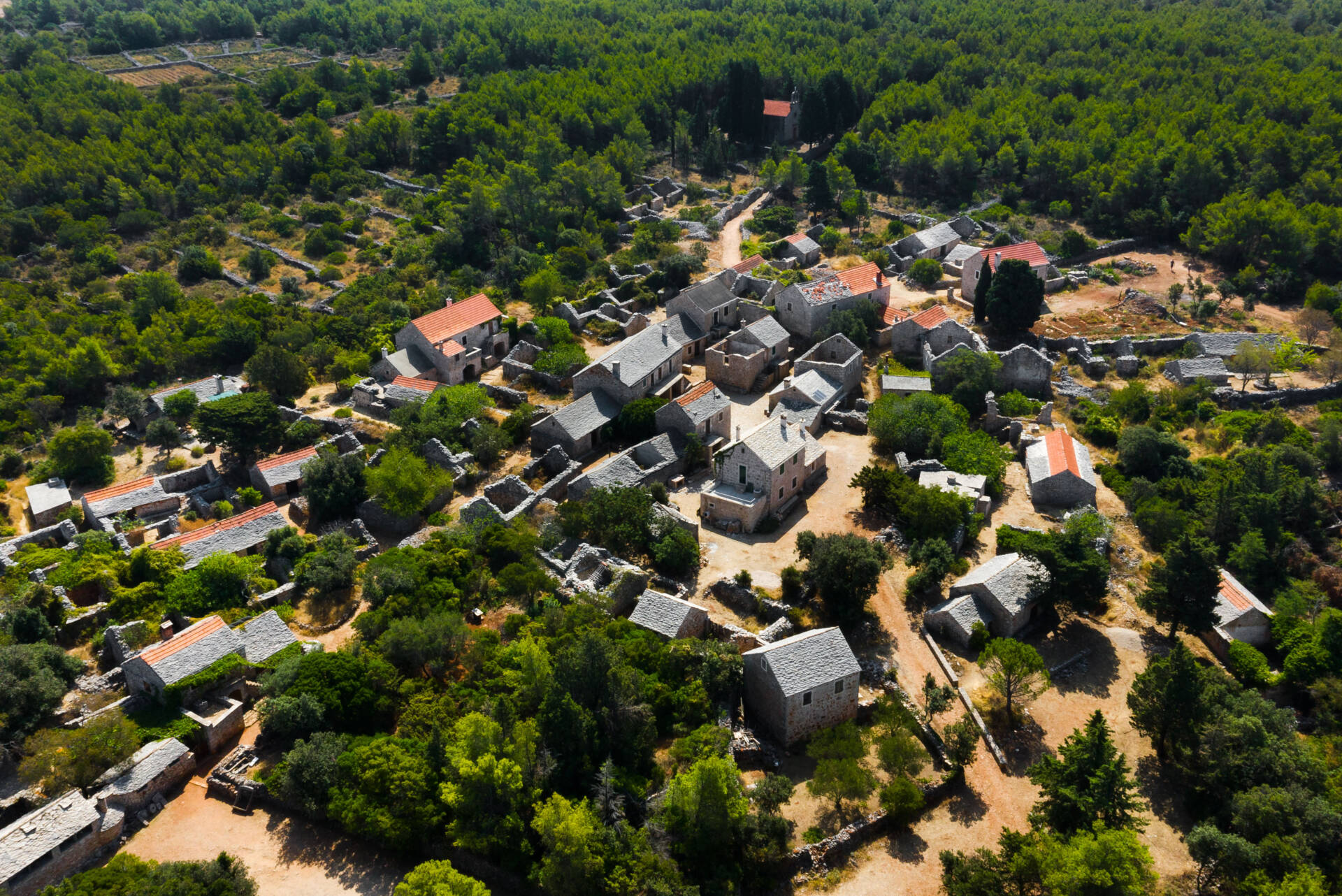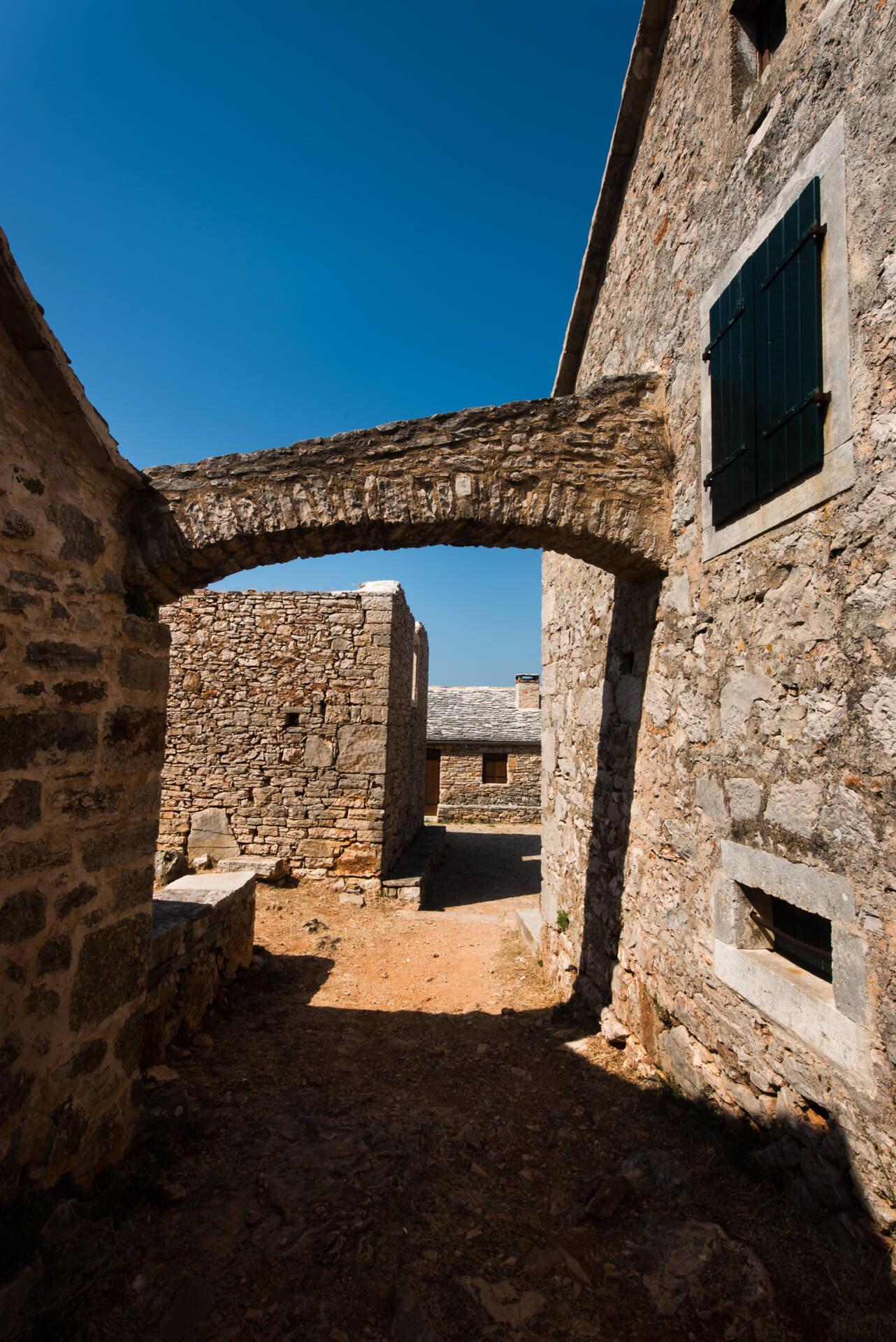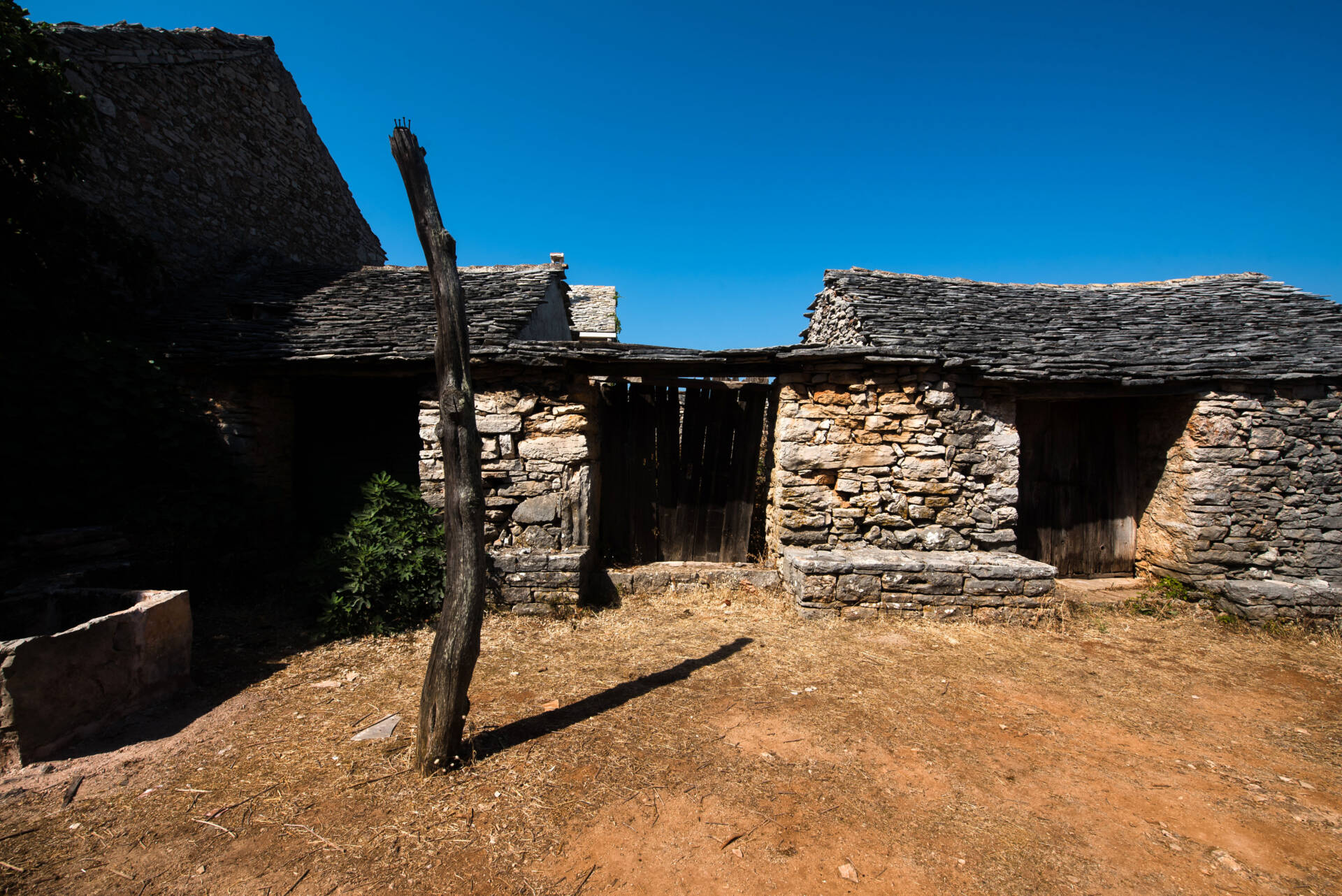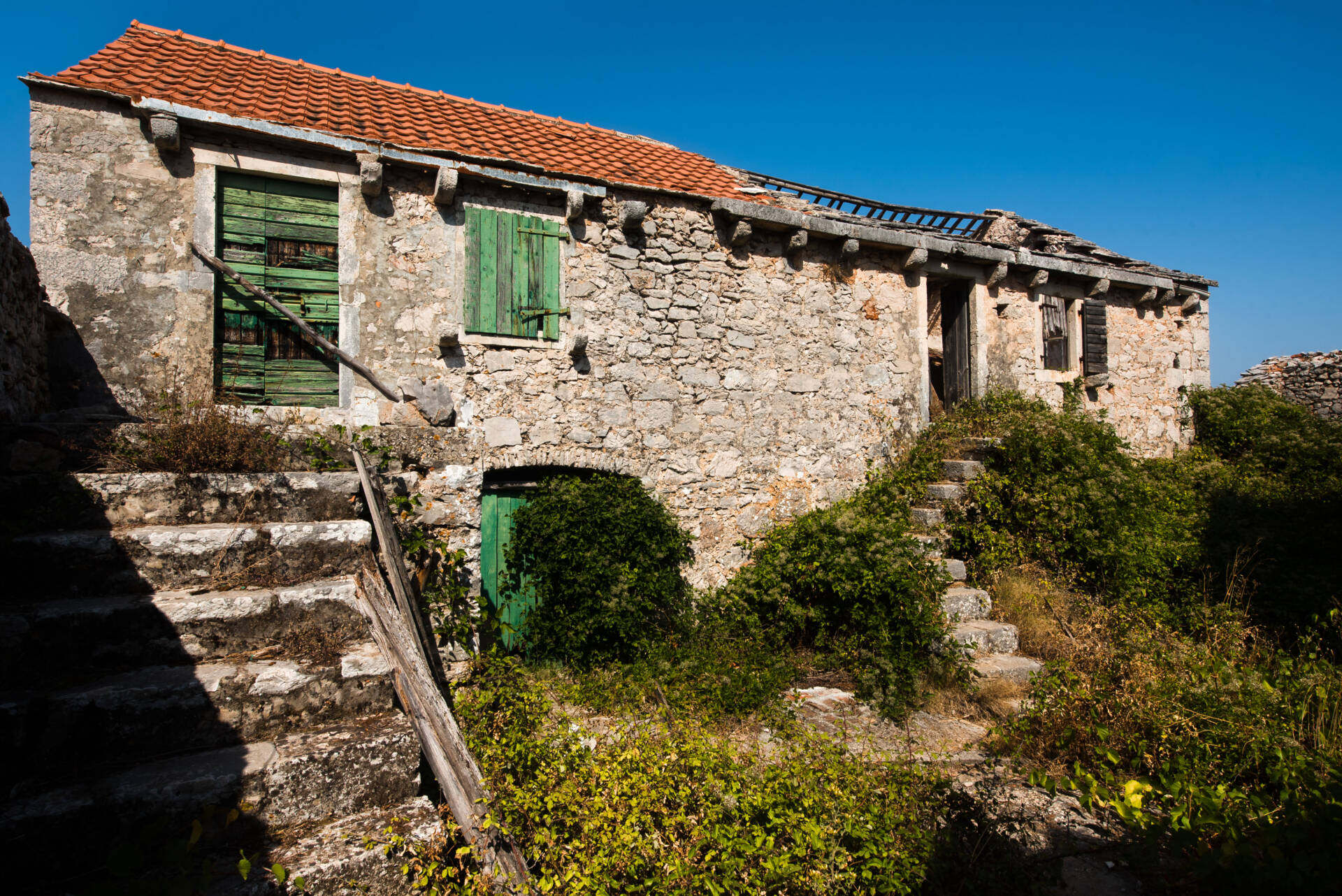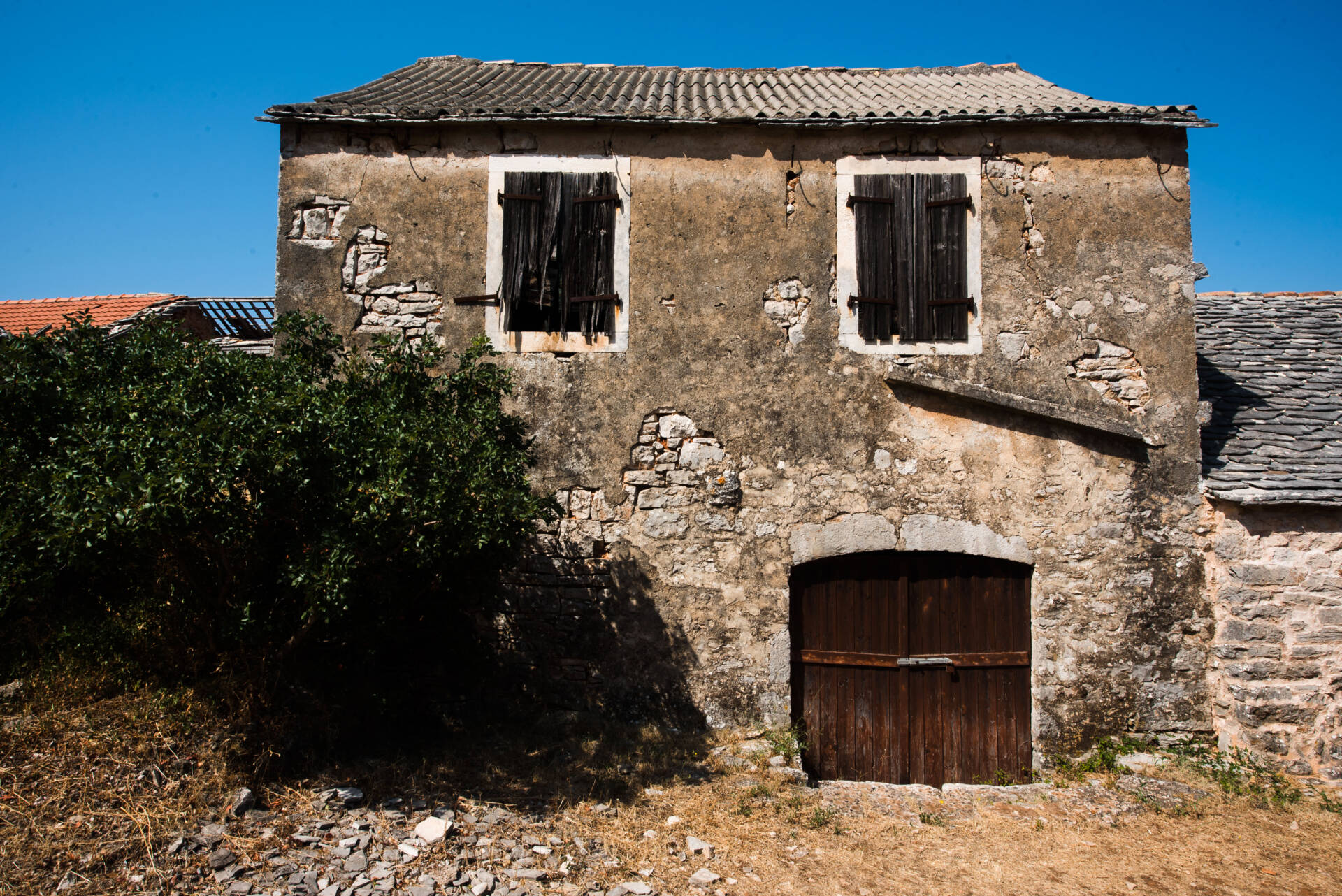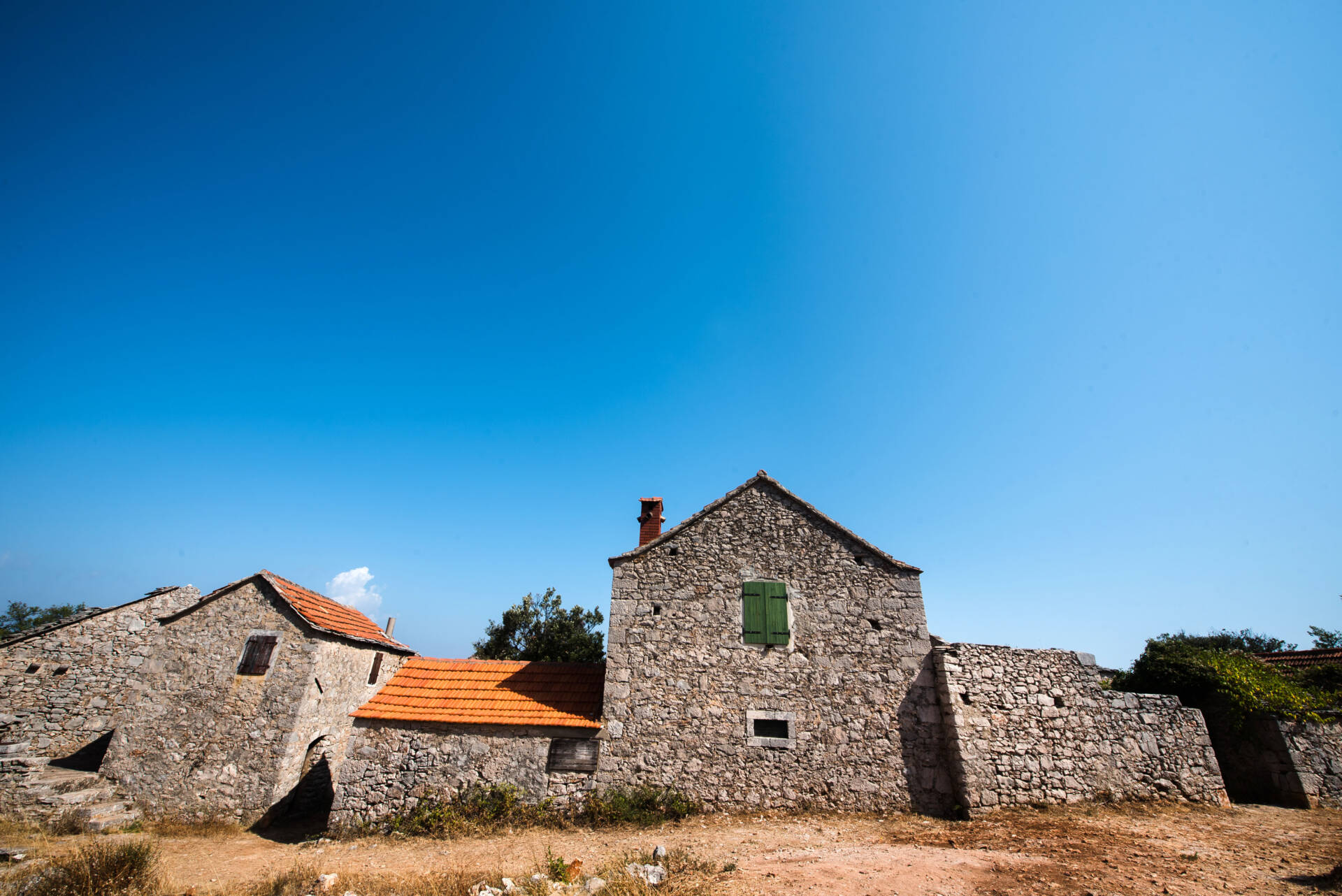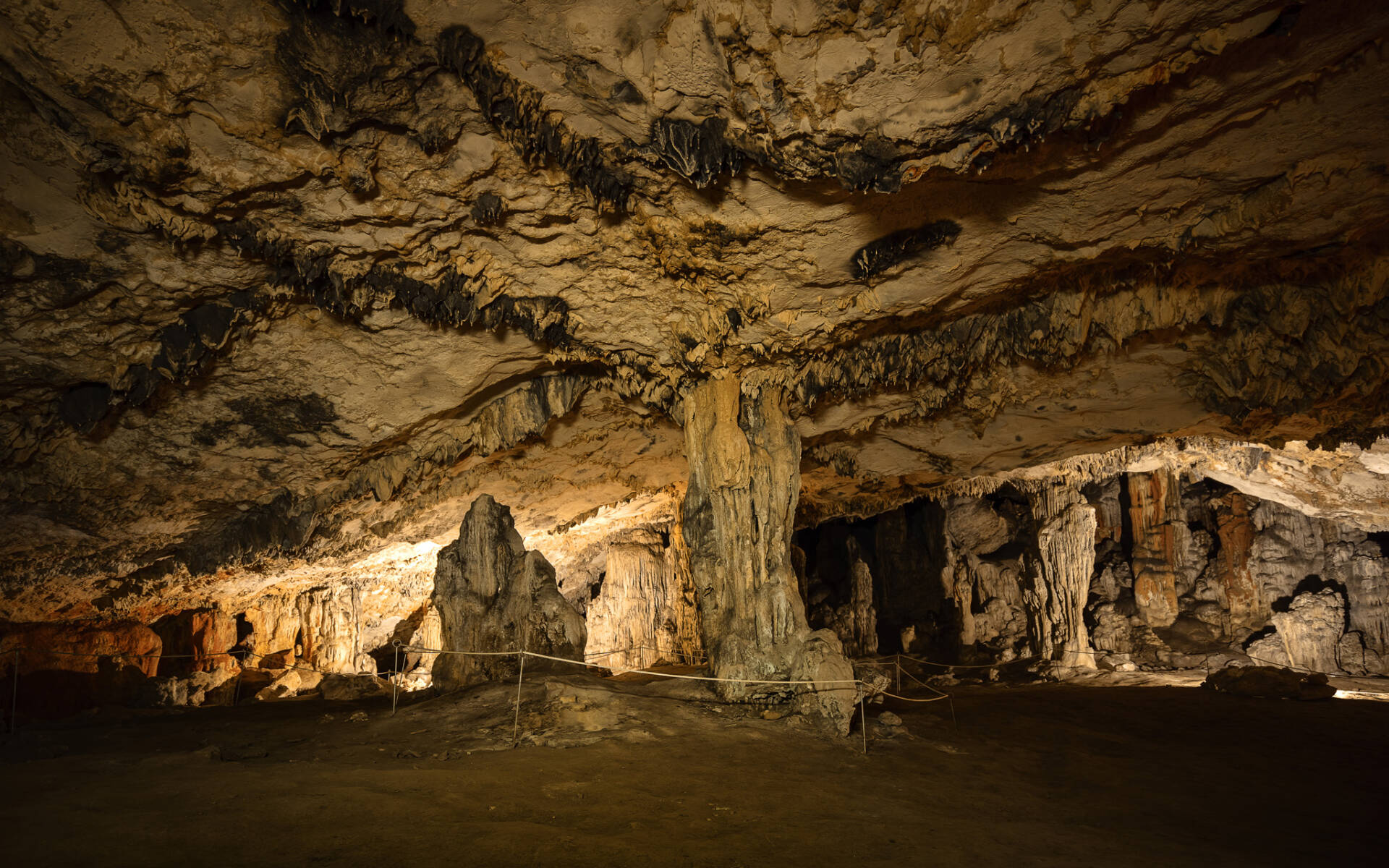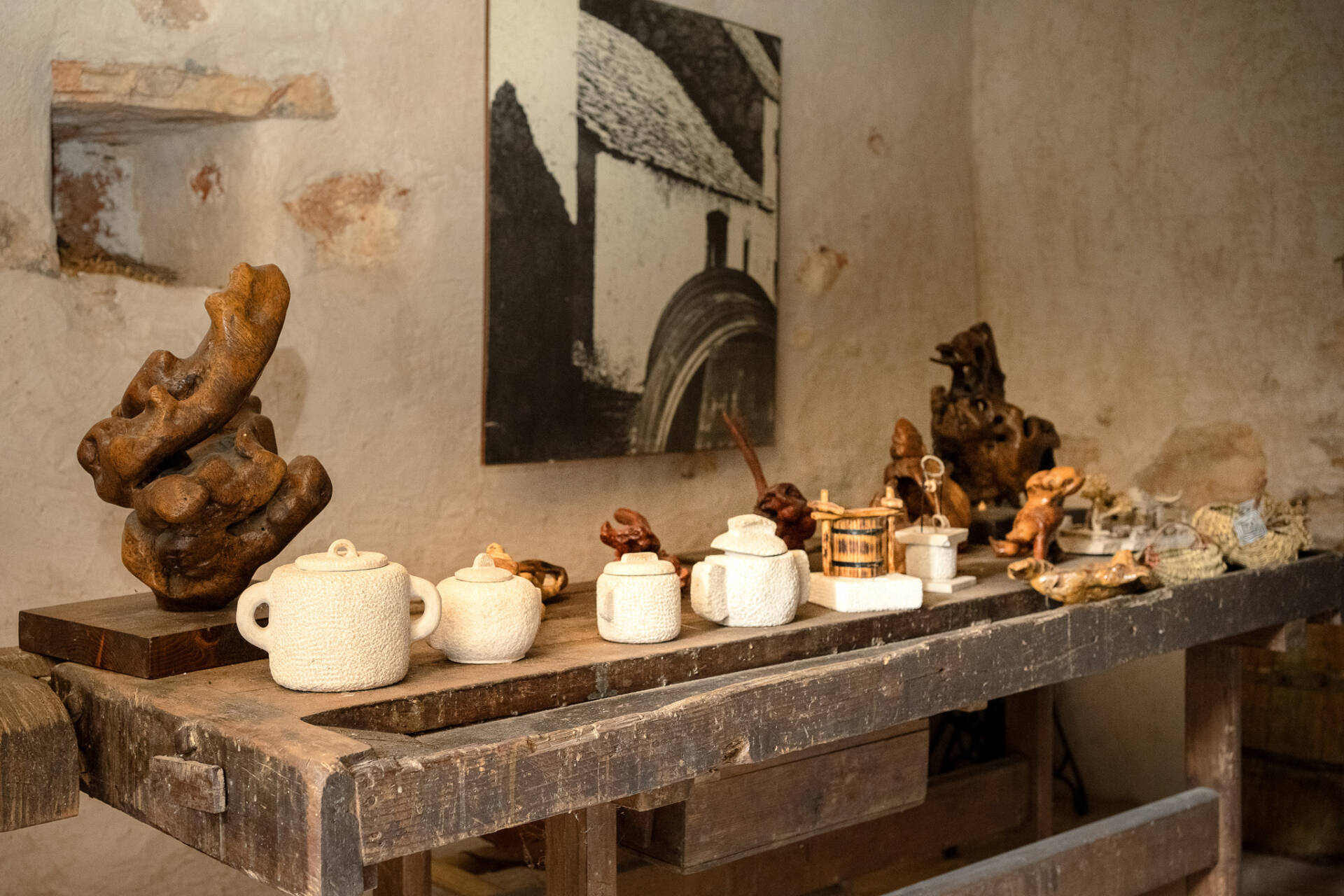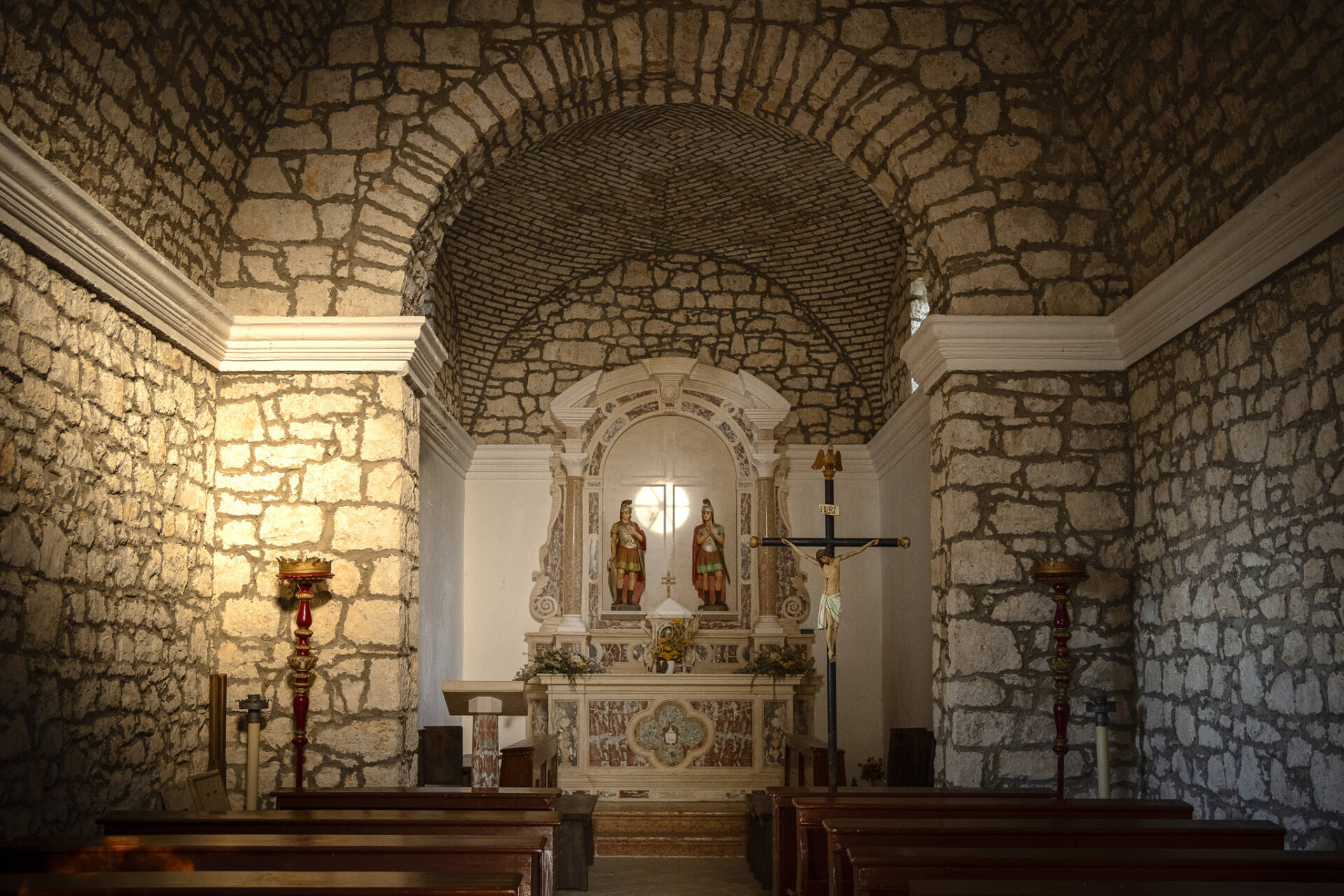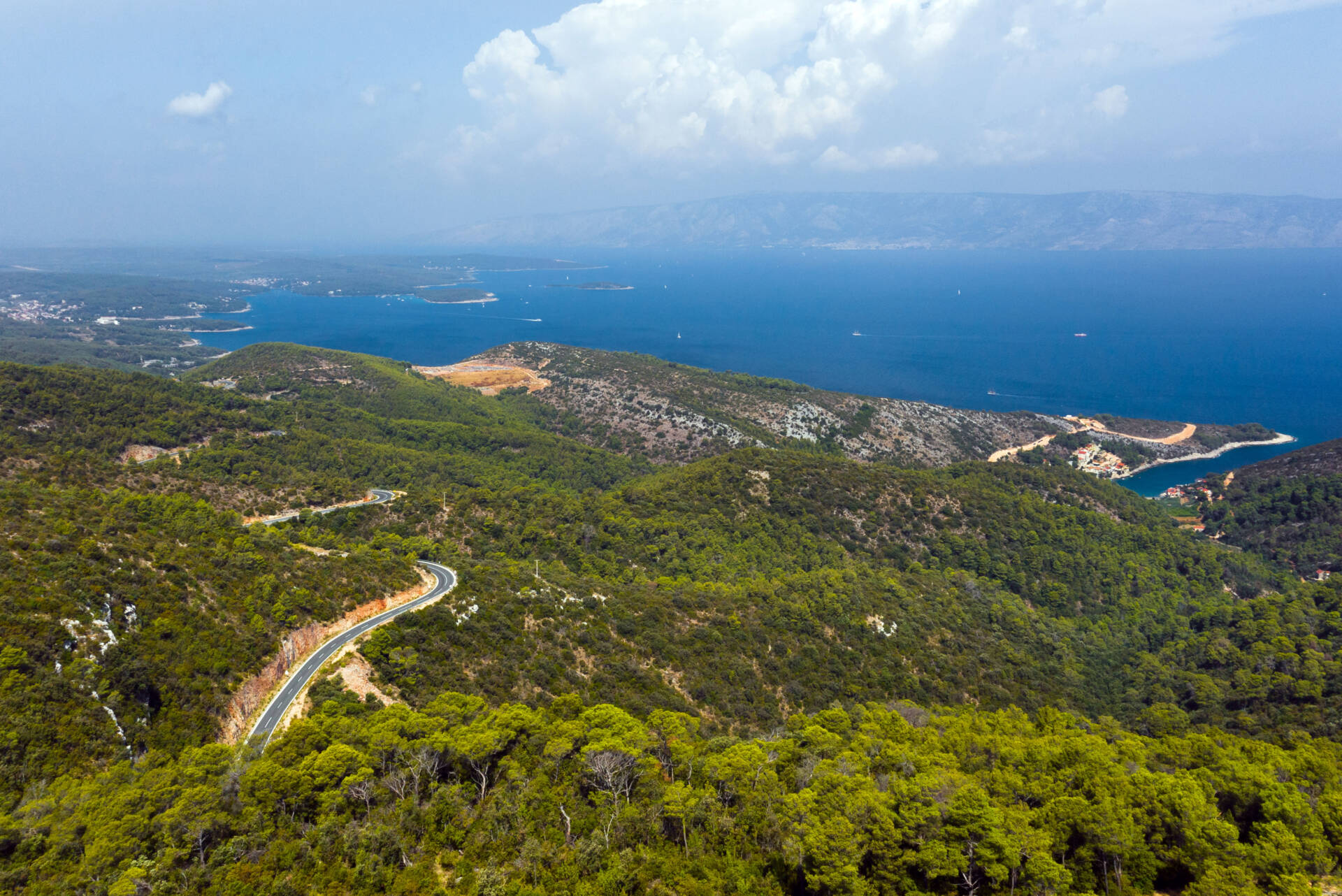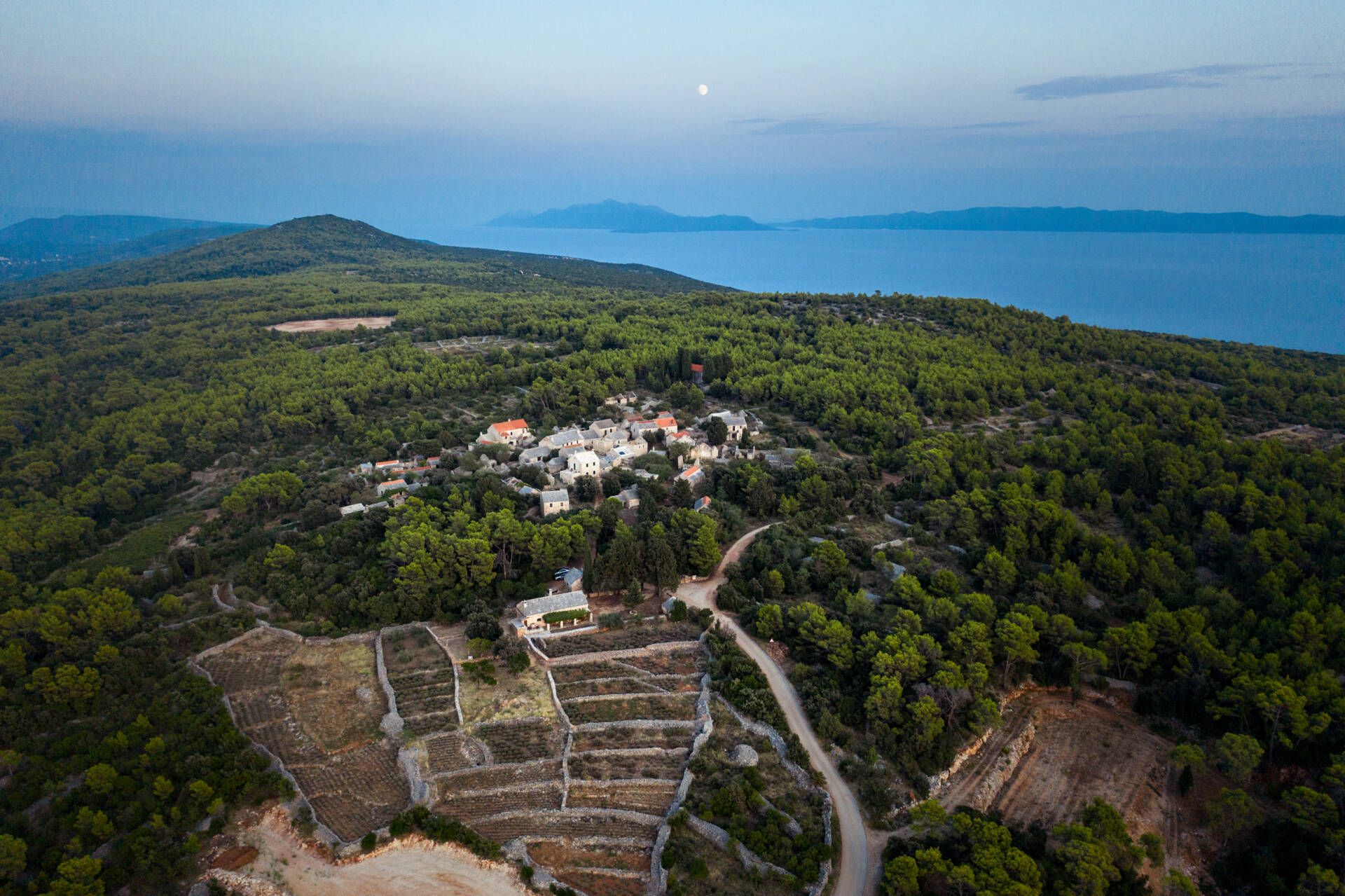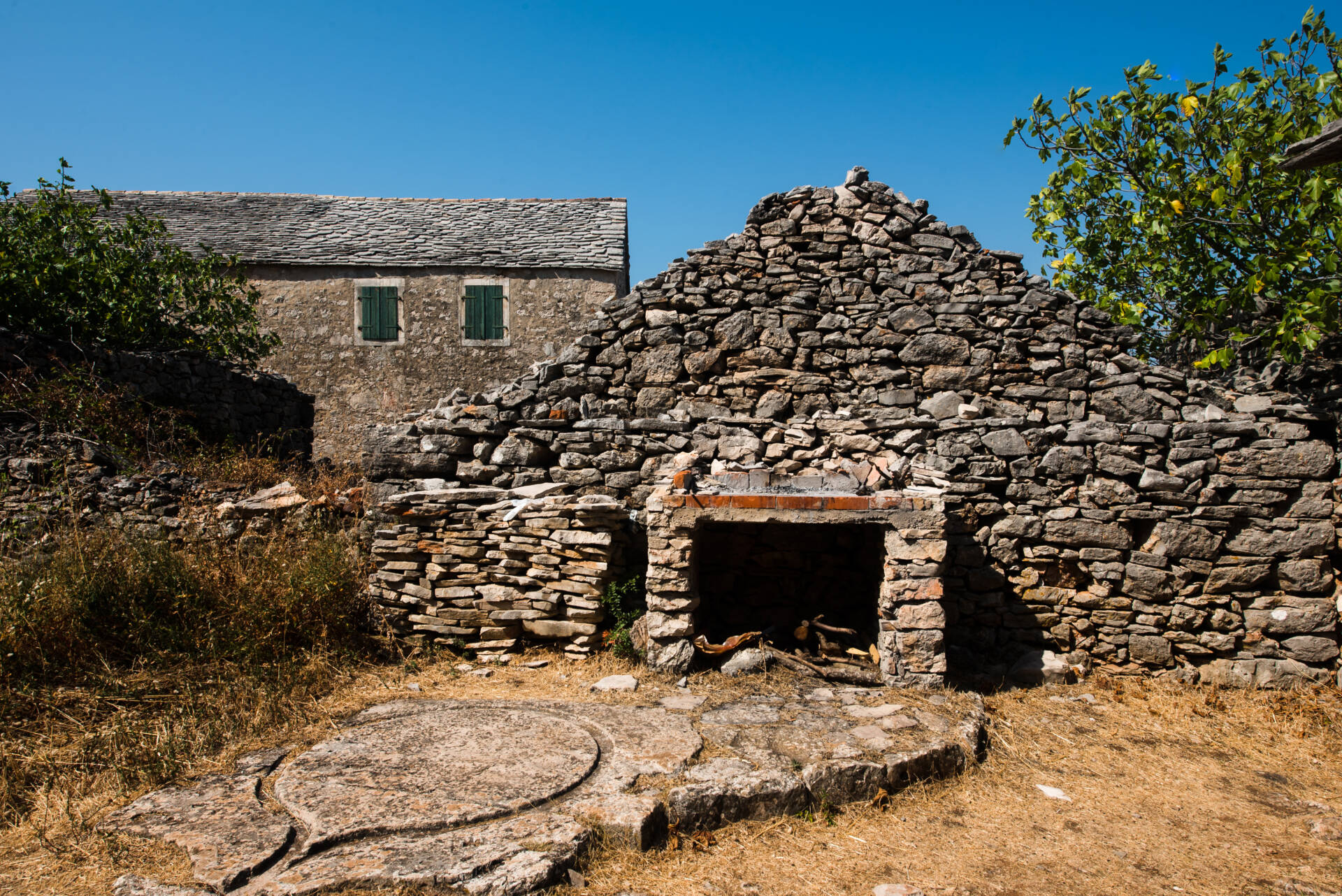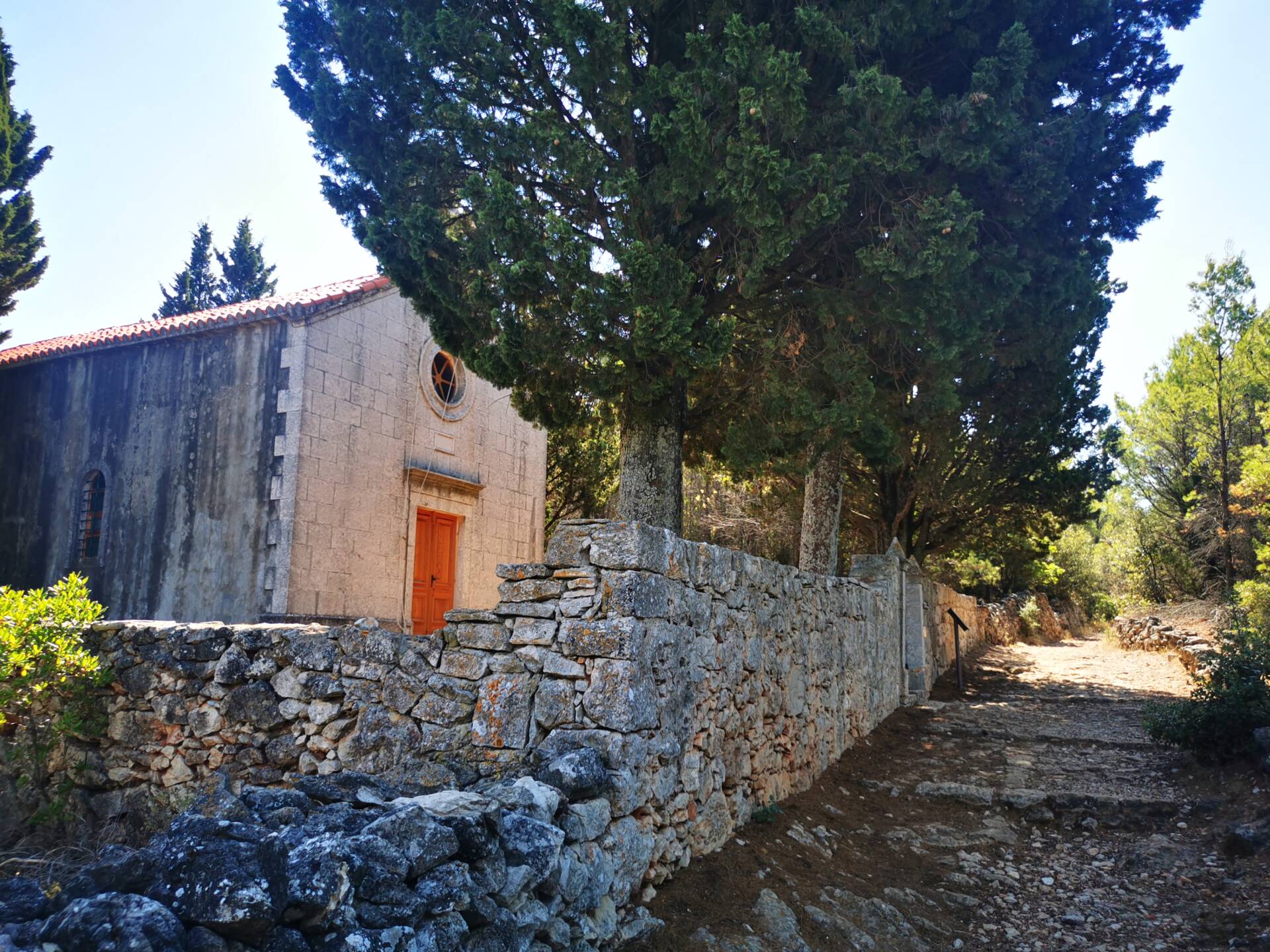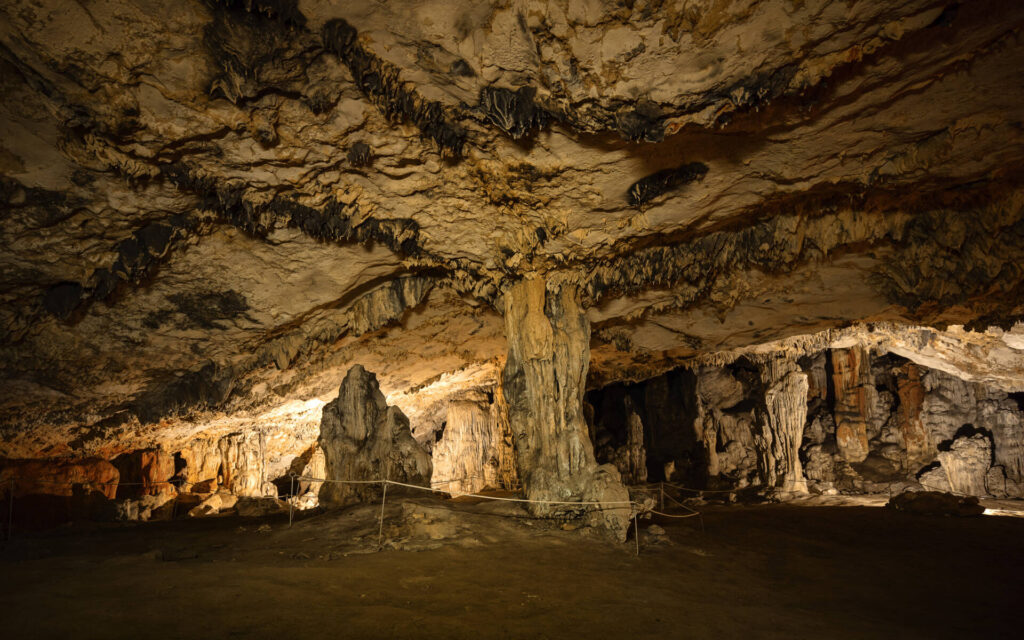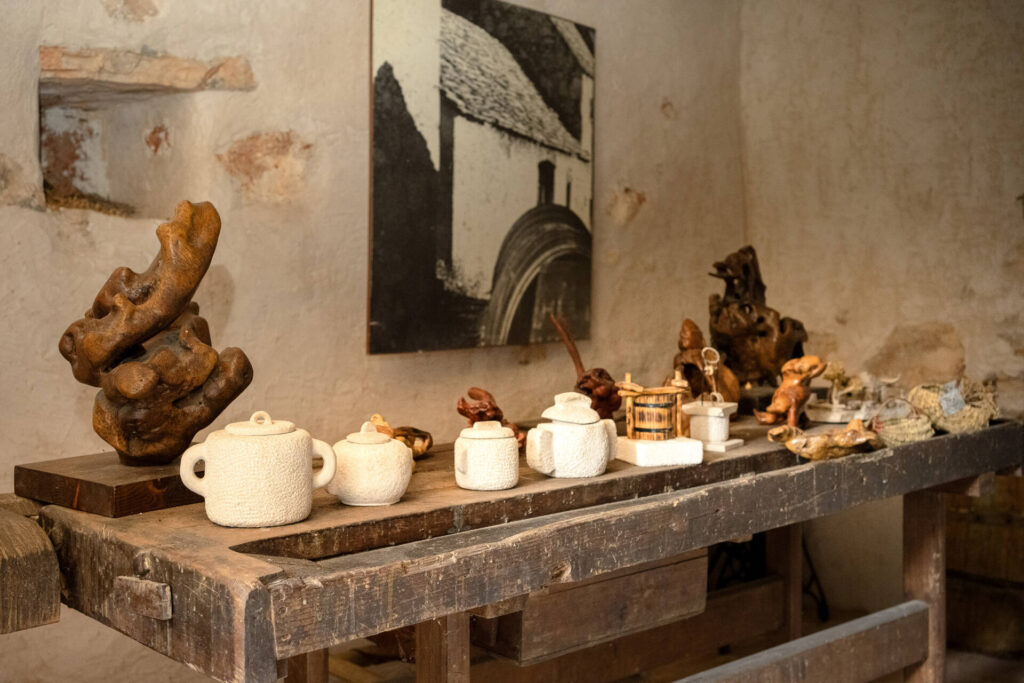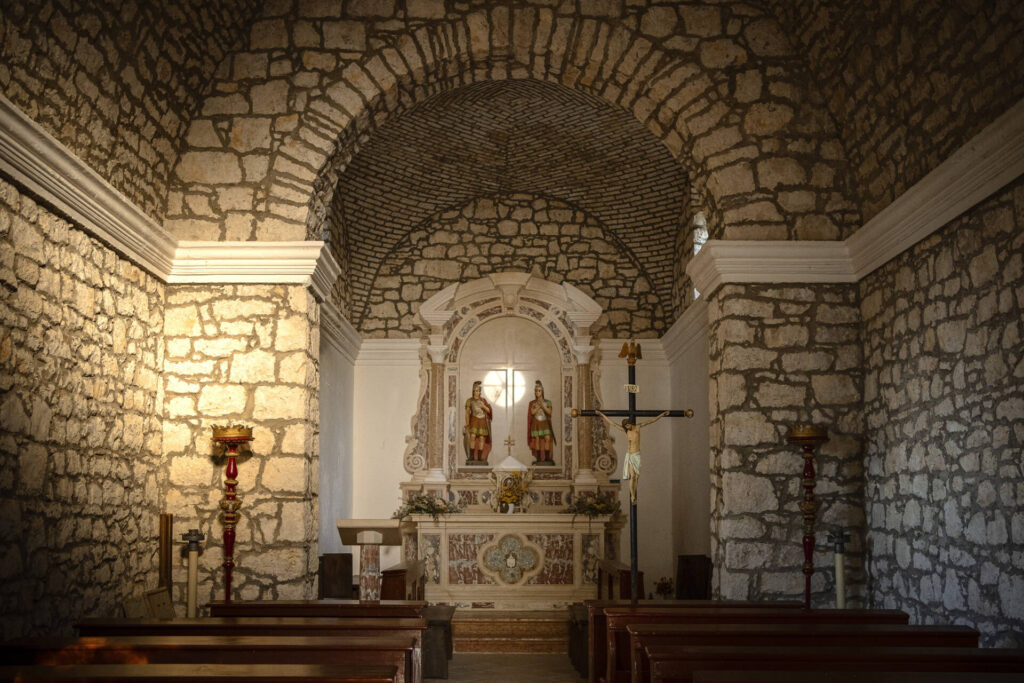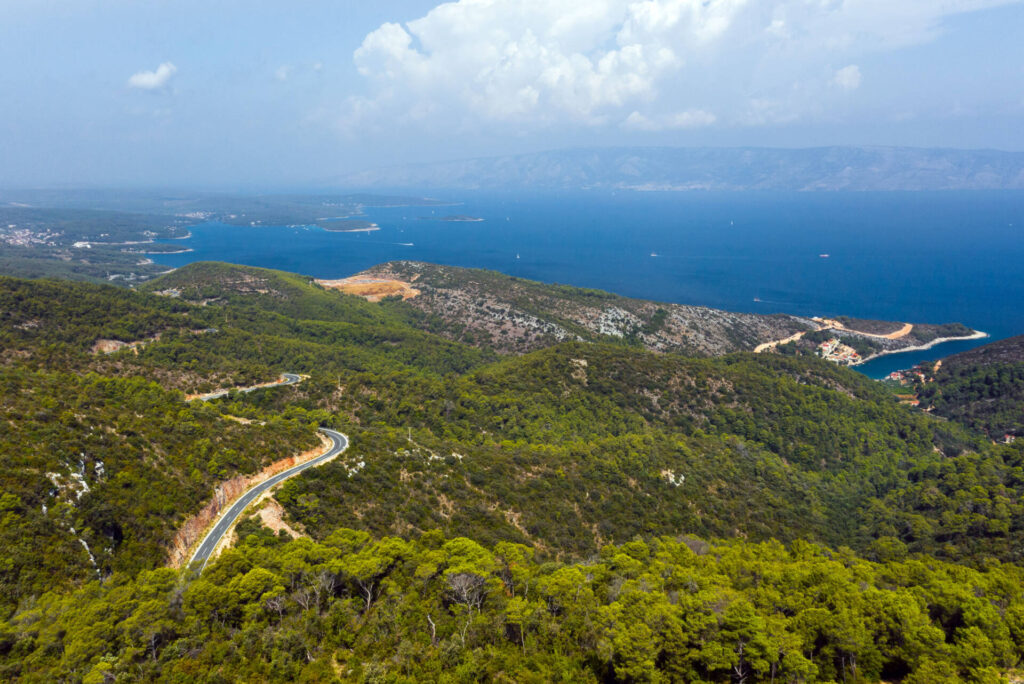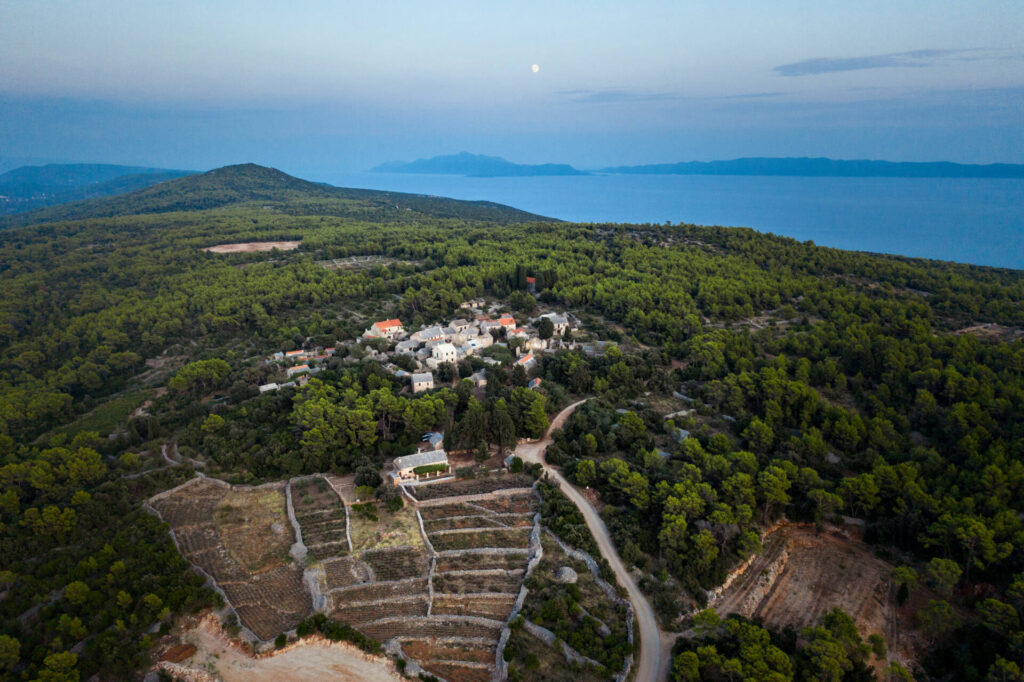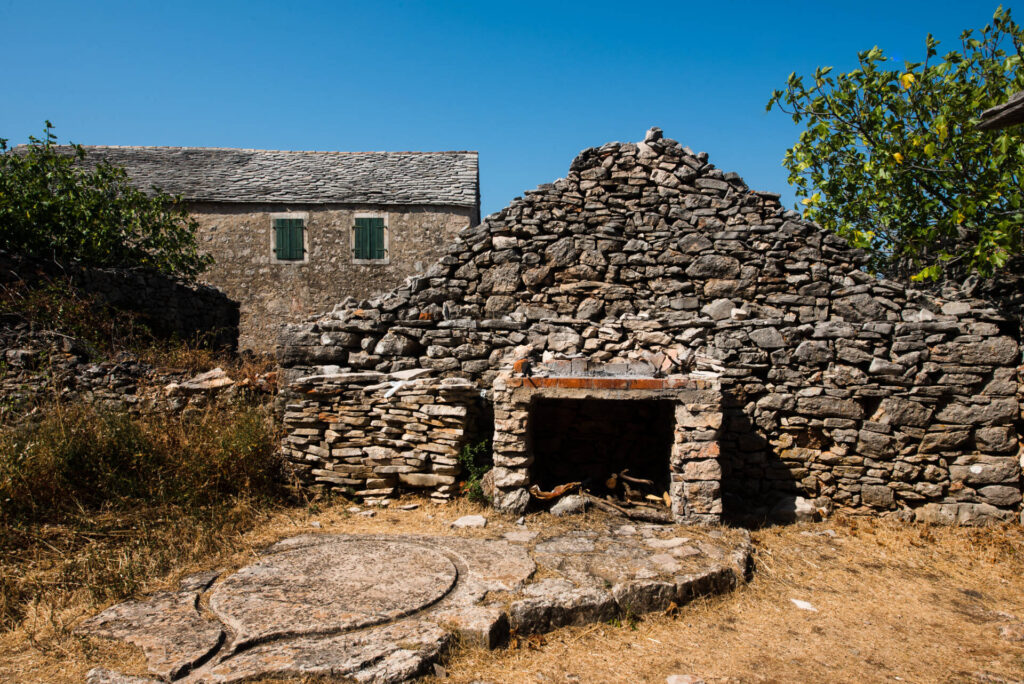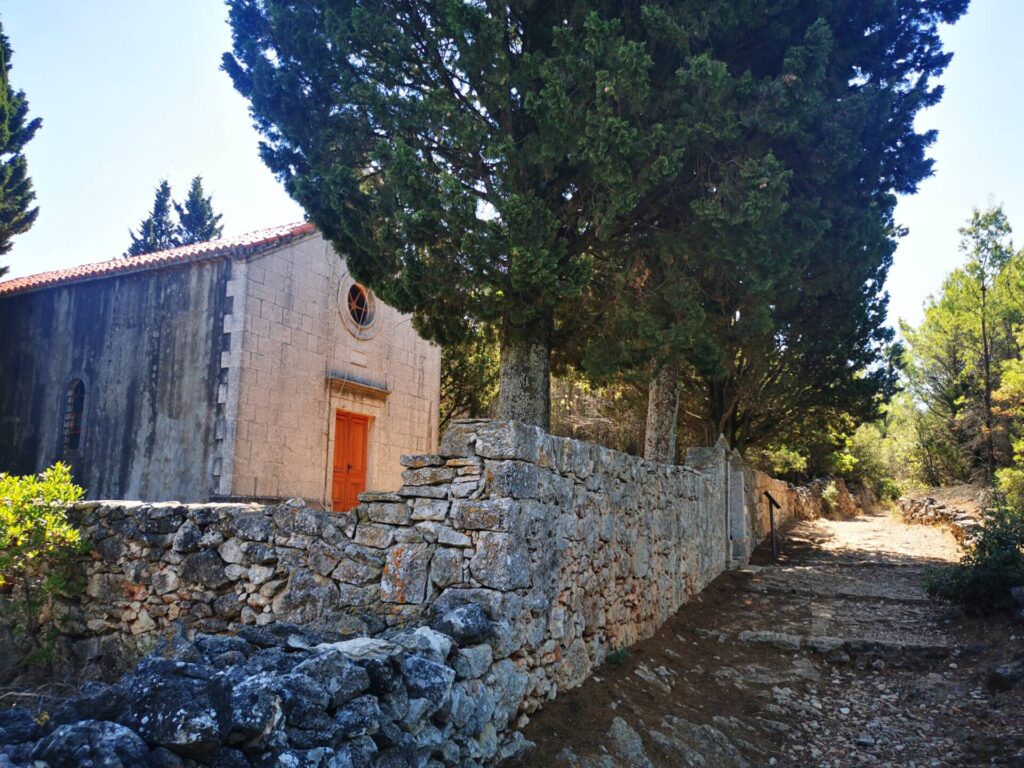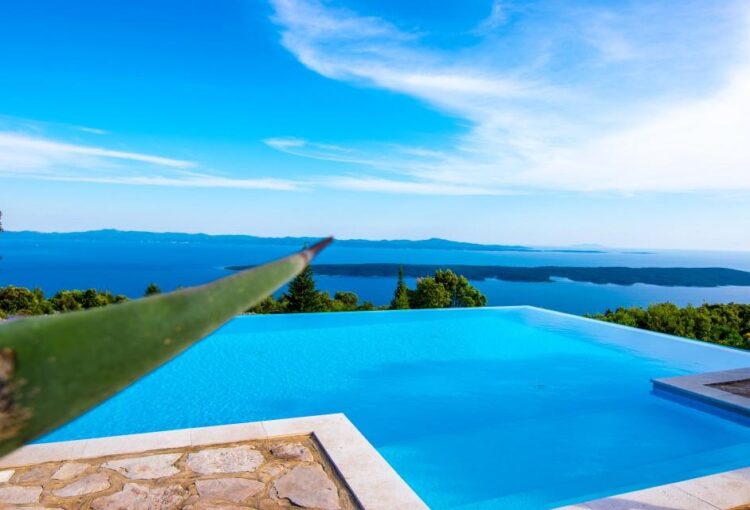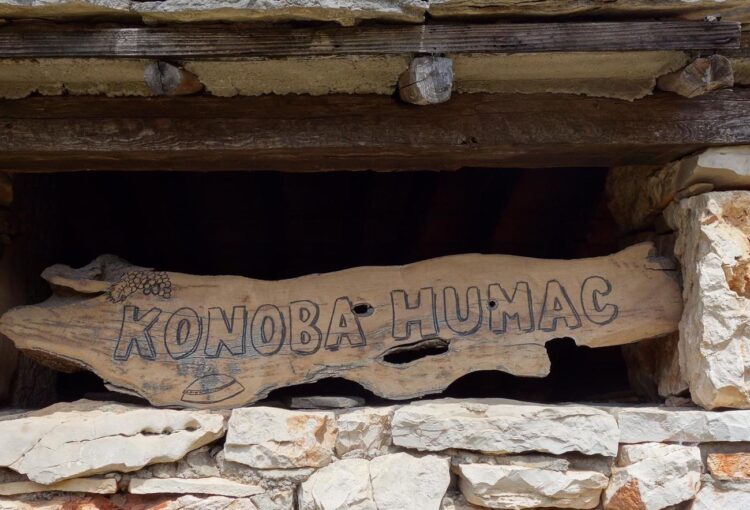The village of Humac is a wonderful example of rural workers’ architecture. Nestling in a hollow in an elongated ridge in the middle of Hvar Island, it consists of 140 little houses, made completely of stone apart from the doors and some windows. It is situated some 10 km east of Jelsa, and sits 350 m above sea level.
Although the buildings are extremely humble, they are well constructed and harmonious. They served their primary purpose well for centuries as seasonal homes when their owners, who came from Vrisnik 15 kilometres away, would stay in their cottages in Humac to work their fields.
The village in its present form dates to the 17th century, although it was originally founded back in the 13th century. From the end of the 19th century up to a few years ago there were almost no changes in Humac. No-one has ever lived here permanently, although throughout history there were always some people staying there, so the village has never been totally abandoned. Now it is being restored as an ethno-eco village.
What there is to see:
* historic, charming stone houses, some beautifully restored, some still in ruins; evidence of the priorities of past times, including special gutters for channelling rainwater into the water tanks and the remains of grape presses and bread ovens in the communal courtyards.
* beautiful views across sweeping landscapes and seascapes.
* spectacular sunsets.
* night sky: with no street lighting, Humac is perfect for watching the stars. Because of its lack of light pollution, in 2020 it was chosen as the location for a meteor camera, alongside a meteorological station.
What you can visit: – the village is well signposted
* In the village there is the charming, beautifully restored parish church dedicated to Ss. John and Paul, surrounded by cypress trees; also a little museum featuring tools and memorabilia from local life in past times. The keys to the church and museum are held in the restaurant, Konoba Humac.
* A short walk out of the village, up a gentle hill there is a telescope which gives amazing magnified views of the seascapes and landscapes around Hvar, across to Brač and the mainland.
* On the edge of the village is the mill where lavender and other herbal plants are processed into oils.
* About half an hour’s walk from the village is the Grapčeva Cave on the south side of the island, with spectacular stalactites and stalagmites, dating way back to Neolithic times. There are regular tours during the summer months which you can book into.
Where you can eat:
The Konoba Humac is a family run restaurant, owned by Jakov and Keti Franičević, and has a well-earned excellent reputation. The owners cultivate olives, grapes and strawberry trees, which are certified organic, as they have long been fully committed to organic agriculture. Please note, meals have to be ordered in advance. (The restaurant is also on Facebook) Contact phone no.: +385 (0)91 523 94 63.
If you want to stay:
Several of the houses have been beautifully restored as guest houses for summer rentals, perfect for anyone wanting a secluded retreat. Here you can find peace for rest and relaxation; a base for exploring the exquisite natural surroundings; or an inspiring environment in which to write or paint. A couple of possibilities to check out: Murvica Stone House, Villa Humac.
Photo gallery
Photo gallery
Accommodation
Nothing found for your criteria.
Nothing found for your criteria.
Nothing found for your criteria.
Nothing found for your criteria.
Nothing found for your criteria.




